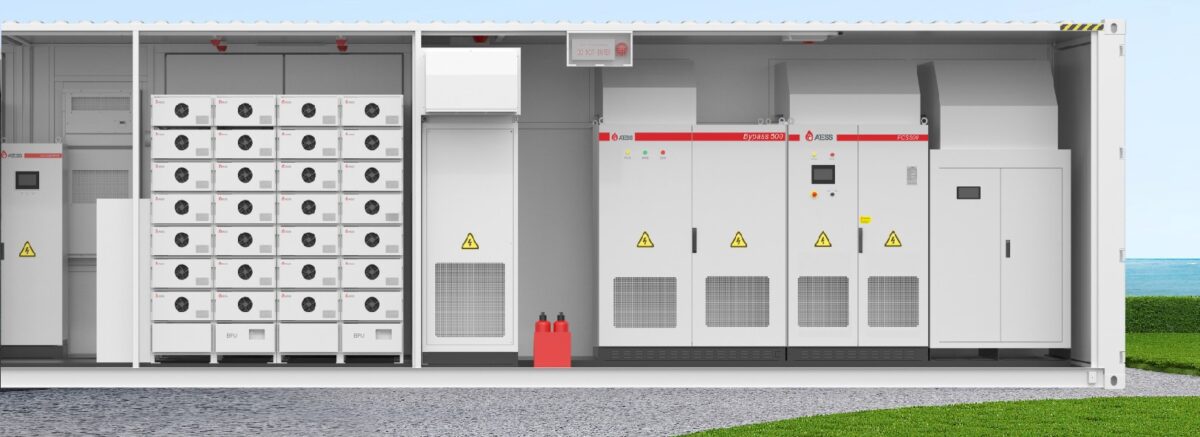Atess Power, a Chinese PV inverter manufacturer, has released a new series of BESS containers. The company offers different technology combinations in its EnerMatrix solution, using either 20 HC containers or 40 HC containers.
“It supports both alternating current (AC) and direct current (DC) coupling solutions, allowing for lightning-fast 0-10ms on/off-grid switching,” the company said in a statement. ”This versatility enables these systems to seamlessly integrate with microgrids, provide reliable backup power, and even perform peak shaving and frequency modulation tasks.”
In its 20 HC product line, the company offers inverters with outputs ranging from 50 kW to 300 kW and lithium iron phosphate (LFP) battery storage in the range of 114 kWh and 1,260 kWh. They also include a combination of DC cabinets and automatic transfer switches.
In the 40 HC configuration, Atess Power offers inverters with outputs ranging from 200 kW to 500 kW and LFP battery storage in the range of 429 kWh and 1,727 kWh. They also include a combination of DC cabinets, automatic transfer switches, transformers, remote transfer feeders, power distribution boxes, and bypass modules.
“Comprehensive safety measures as well as the smart heating, ventilation, and air conditioning (HVAC) system and smart fire protection system ensure the utmost reliability and security of these energy storage solutions,” the company said. “The containers are integrated with advanced communication features, and can easily integrate with existing energy management platforms.”
The company also offers two battery-only containers. In the 20 HC configuration, it includes 1,720 kWh of LFP batteries, while in the 40 HC configuration, it includes 3,440 kWh of storage. In addition, the company sells 40 HC product containers with transformers, bypass, and power conversion systems.
“Designed with accessibility in mind, these systems can be maintained from both the front and rear sides, minimizing the time and resources required for ongoing upkeep,” the company said. “This user-centric approach is further complemented by a robust temperature control system, which ensures the stable operation of the system and extends its lifespan.”
This content is protected by copyright and may not be reused. If you want to cooperate with us and would like to reuse some of our content, please contact: editors@pv-magazine.com.



By submitting this form you agree to pv magazine using your data for the purposes of publishing your comment.
Your personal data will only be disclosed or otherwise transmitted to third parties for the purposes of spam filtering or if this is necessary for technical maintenance of the website. Any other transfer to third parties will not take place unless this is justified on the basis of applicable data protection regulations or if pv magazine is legally obliged to do so.
You may revoke this consent at any time with effect for the future, in which case your personal data will be deleted immediately. Otherwise, your data will be deleted if pv magazine has processed your request or the purpose of data storage is fulfilled.
Further information on data privacy can be found in our Data Protection Policy.